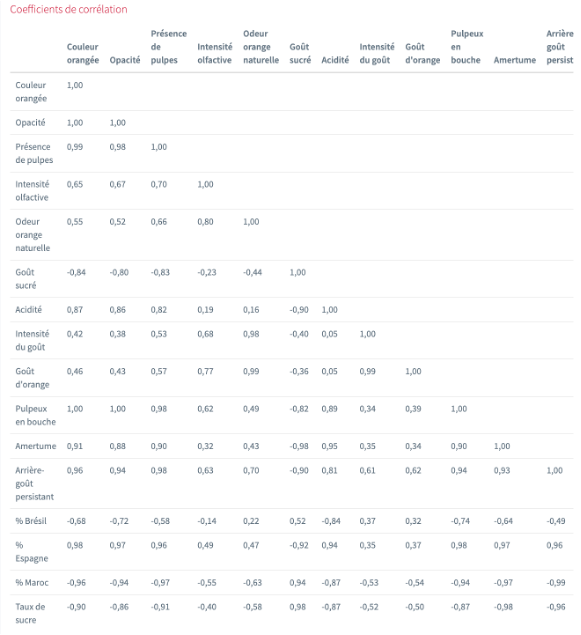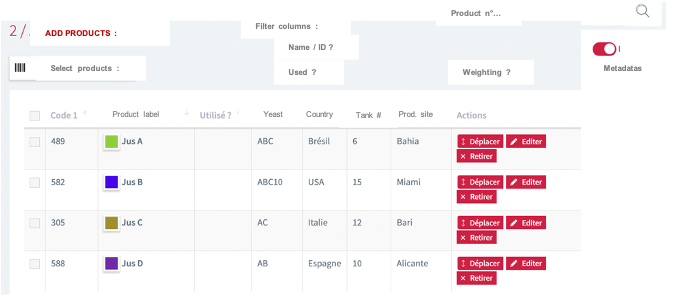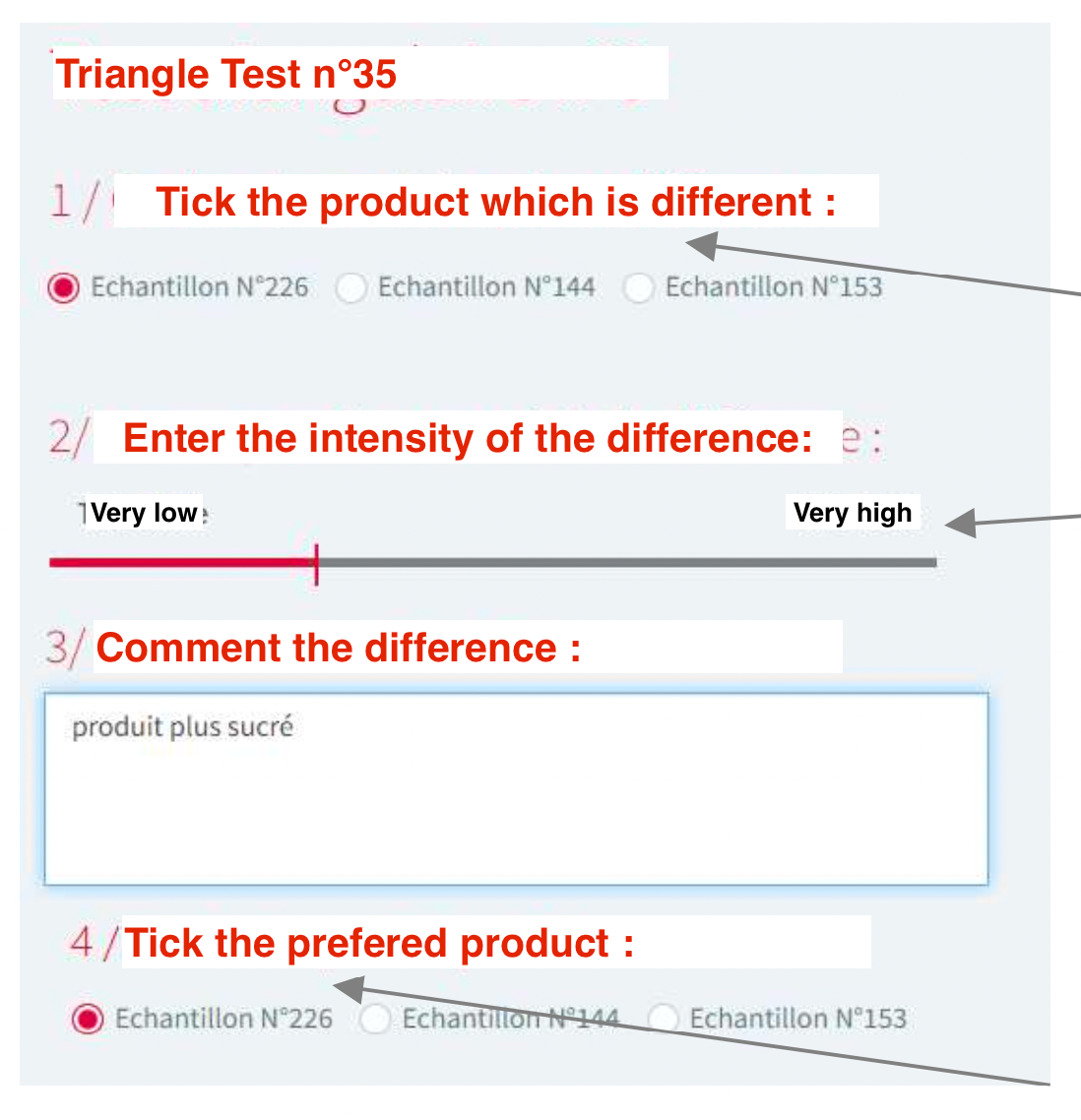RETROSPECTIVE 2023:
We (re)discover the 8 points of improvement that marked the year 2023 for Tastelweb®.
Database
No. 1 : Crossing sensory data & metadata.
It is possible to analyze the correlation between sensory data and other variables (metadata).
Metadata can be linked to :
- panelists : expertise, site, places purchase, frequency of consumption etc...
- products : grape variety, vintage, ingredient, supplier, factory, pH, acidity, amino acids, sugars, molecule concentration...


Database
No. 2 : Improvement of the database.
An optimized search system (filters, sorting, query system).
It is now possible to query more easily product data, for example, what are the products of the same nature, what is the number of tests carried out on such product, what are the associated descriptors or even what are its other characteristics, for example :
- grape variety, vintage, ingredient, supplier, factory...
- pH, acidity, amino acids, sugars...

Triangular
No. 3 : Possible additional options :
1/ Insertion of a question of preference (optional)
2/ Addition of comments on the other 2 products (optional)
3/ Unique product response directly given to the panelist (optional)
4/ Export of raw data in Excel format

A new way to connect
No. 4 : SaaS & SSO connection (“Single Sign-On”)
Access to Tastelweb® software is easier for users belonging to large companies.
This type of connection has the following advantages:
- The existence of an administrator in the company who can manage the opening and closing of user accounts
- The access to a common work space, with a common database
- SSO : optional, a user accesses several computer applications (including Tastelweb®) by only carrying out a single authentication.

Export results reports
No. 5 : Reports in Excel format!
The summary results are already exportable in PDF and Word format.
Now, with Excel format, you can:
- change values in tables and graphs
- modify the texts, colors of the graphics
- change language for texts, descriptors of your graphics
- copy and paste your tables, graphs in Powerpoint
- see your changes in Excel reflected in Powerpoint !

Database
No. 6 : Categorization / family of tests
It will be possible to create
test categories that group similar tests together.

Database
No. 7 : Common database : perimeters with access rights
This concerns companies which opt for a database common to several leader / facilitator panels.
It will be possible to give differentiated access rights to preserve confidentiality of a service, a subsidiary, an R&D project, etc.
- owner (modification, deletion of the project, team definition, etc.)
- editor (creator of a test, a results report)
- reader (simple reader of results reports)


New tests
No. 8 : Qualitative Profile
1 - A new descriptive method
based on a qualitative scale of perception !
- “Applicativity”, good correspondence of a descriptor to an odor
- Consensus facilitated by families of descriptors

2 - Possibility of ruling in a consensual manner for
questions of product categorization or conformity. Automated flows with information systems (ERP, SAP, etc.)





